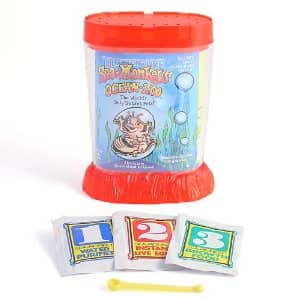If you’re new around here, you’d be forgiven for not realizing that, hey, I don’t just guru all day in my pajamas. My teaching comes from real world experience, running a business that is not in the business of teaching people how to start a business.
Crazy!
So yeah, Noko Time Tracking is my first biz baby. It’s our very profitable SaaS, and we ran our first billing cycle on January 2nd, 2009…that’s now over a decade ago!
Here are five things I wish I’d known when I started Noko, things that would have made my life so much more profitable and pleasurable.
5. There is always another inflection point coming
Inflection points are those knife-edges you tip toe along, when things could go either way, when you are, say… trying to grow your team but lack the time/revenue to do it, but growing your team would help increase the time/revenue to the point where you could grow your team. Ouch. To me, that’s the prototypical inflection point.
Others:
- You’re working on features to please a better set of customers, but at the same time, you need to be working on stuff to retain your existing customers.
- You’re trying to firm up all your internal business processes to save money, but you also have to, you know, work on your actual business (the part that makes money) at the same time.
- You need to master a new skill to get to the next level — which means you must practice, practice, try and fail before you can succeed — but you also have to keep doing what you’re doing because it’s working-ish.
- etc (there are a million permutations)
Over the many years running this biz, I have said so many times: “We just have to get through this $INFLECTIONPOINT and then things will get easier.”
This is both a truth and a lie:
- The truth: Yes, you can get past them and through them, and yes, then that particular sharp edge — whatever it was — becomes much more friendly.
- The lie: But if you want to keep growing, there’s always another sharp edge, just around the corner.
This isn’t just about revenue, but also for mastery, and personal growth.
To get better, you have to stretch yourself.
I wish I’d known this in a more concrete way when I started, because it would have saved me a fair bit of angst. I would have chosen to focus on fewer things and stressed less. Plus, the entire time I was walking on that razor-sharp edge, I could have told myself, “This is the investment part of The Investment Mindset.”
I know this now, obvs, and it really does make it easier.
4. Teams are not “just add water”
Oh god, “outsourcing.” The flippant Medium.com startup dude’s favorite topic. They all make it sound like an afterthought: “…and then you grow your team…” Nope. Doesn’t work that way. Total lie. Even when it’s true outsourcing — e.g. hire an accountant — it’s hard as fuck.
Fact: Every single human is an explosion of complexity; needs, wants, quirks, foibles, beliefs, habits, worldviews. Humans are the hardest part of any business. The closer they are to you, the harder it is. Customers are pretty much at an arm’s length… but your team is right up inside your strike zone, next to your soft underbelly. (And you are, to theirs.) Hiring looks easy but in reality it’s fraught with danger and difficulty. Even most contractors still have to be managed or at least overseen.
Being a boss is far more demanding and difficult than acquiring and serving customers.

It’s wonderful to work with the right people. It’s rewarding to help people learn and grow. It is incredibly tough to get to that point. And it’s expensive.
Felix Dennis wrote, “Overhead walks on two legs.” And it’s not just financial overhead, but time, energy, and feeeeeelings. It can absolutely be worth it. But it sure as hell ain’t easy.
What would I have done differently if I’d understood that from the start? Well, a really long list of things. I can’t tell you all of them for various reasons. I can say that other people have been by far the biggest stress in my business.
Here’s one huge thing I would have avoided with that knowledge: We never would have built Charm, which we knew from the start would require a larger team. And if we hadn’t built it, we wouldn’t have ended up choosing to shut it down. That would have saved us a couple hundred grand, tons of time, and two years of opportunity cost that held back both Noko and 30×500. Plus, you know, sadness.
Duh.
3. 90% marketing, 10% product
Here is the double-edged sword of the software business:
- All the “features” in the world will not matter if you don’t have the customer pipeline.
- It is better to lose many customers over a missing feature than spend a month on a feature that people say will make them sign up.
- Yet there really are features you’ll require in order to get and retain your best customers.
OK, so maybe it’s a triple edged sword. Or maybe a citrus reamer. Shut up.

I understood this in an intellectual sense, and I tightly managed our list of features for a long time. But we still built stuff that didn’t matter, while at the same time not building fast enough some of the things that really did.
But we did not at any point do enough marketing. Never. Not once. Not even now. (It’s #1 on my agenda for this year.)
So we will have these new features that our best customers really, truly need — features that will remove objections, and help us land some big fish, and retain them, too.
But it’s not like overcoming an objection will magically draw new eyeballs in. New features do not fill your marketing pipeline. The value is in the features only once your customer owns the product. After they learn your name, read your sales page, sign up for your free guide, open a trial account…
If there’s nobody to object, does a missing feature make a noise? No.
So, what would I have done differently for the past 7 years? In one word: Marketing. Marketing marketing marketing. Marketing. Marketing marketing. Marketing. Marketing.
Marketing.
*whispers* Marketing.
2. Focus on your BEST Customers, 100% of the time
I’ve mentioned “best” customers a few times already and lemme tell you: that distinction is crucial to your health and happiness. So important they get capital letters: Best Customer.
Brace yourself for a lot of words because this is important.
Customers are not created equal. Your best customers will:
- pay, gladly
- pay more
- pay upfront far more willingly
- they will actually use your product (funny how rare this is)
- they will get the most value out of your product
- they will probably want new things too, but they’ll be glad for what they already have and they’ll be polite about it
- they will require fewer support resources
- they will stay customers longer
- often they will be the ones to spread your product by word of mouth, but not all Best Customers are talkative
If you’re looking at that list and going “Gee I want me some-a’ that!” then you’re not alone. I want me some-a’ that too. More of that, even.
Unfortunately, sometimes the first time you spot a Best Customer is when they close their account and you realize they’d paid you several thousand dollars over the years and never even had any contact with support at all, because they were just quietly getting their fucking work done. Whoa. (Speaking from experience? Me? Nooooo, what gave you that idea? *cough*)

The thing about non-Best Customers is they are louder, they demand more of your support time, they pay less and leave more often, they buy differently, and — cue the horror music please — because they don’t get as much value from your product, they often have the most requests to change it and the changes they request will not be the same things your Best Customers want.
Non-Best Customers aren’t simply “not ideal but pretty okay” but their presence, in sufficient numbers, is toxic.
I sorta knew this when we started out, but like the feature thing, it wasn’t nearly as firm and fixed in my mind:
We spent the first 6 years focusing on our not-best customers. I designed Noko primarily for small teams and consulting agencies. That was smart. Those customers were business-minded and fairly stable. They were not ideal, maybe? But they were pretty good. Go, Past Amy, you rule.
But… I did not hold that line. We did not want freelancers… but I let myself get browbeat into adding a freelancer plan, anyway. So many people wanted it, and I wanted their money.
The result:
- We had a huge influx of freelancers (they are easy to sell to!).
- We spent a disproportionate amount of time giving freelancers support.
- We made invoicing, let’s face it, mostly for them. Our larger teams don’t use it.
- Worst of all, we looked at them — the lion’s share of our revenue for some time — and we spent time, energy and money, to target more of them.
Yikes. I learned very valuable lessons but I would not do it again. Many of our individual freelance customers are fine and dandy, but en masse? It was a direction shift that hurt us.
Now we are targeting our sales copy, our sales process, and our features for our best customers: Big teams, including larger agencies and professional services companies, as well as internal departments in larger companies or institutions. They pay the most, they stay the longest, they are genuinely happy, and that makes us happy.
We had our first $10k sale to one of these big fish and it was GLORIOUS.
We could have been doing that years sooner, if we’d focused on our best customers.
1. Just because it can make (good) money doesn’t mean you should do it
Story time: my husband texted me, “I dig your software rant.” Because I was indeed ranting on Twitter about software.
ffs hypertext is like 40 years old can't we have durable bi-directional interconnectedness in a research tool pic.twitter.com/zNYnhUCZ8M
— Amy Hoy (@amyhoy) March 21, 2016
I rant on Twitter about software because I’m not designing any more of it, not for a while anyway. But every time I use a shitty piece of software, a little voice inside me whispers: “I could do it better.” And it’s right! I could do it better. Most software is abominable! And there’s so much of it.
The problem is there’s only one me.
And I like to make money, and have time to read, write, enjoy time with my husband and friends, travel, bid in auctions, that kind of thing.
Therefore, I can’t do everything.
I can run one software business, and that’s it.
If you’d told me this back in 2008 when we built Noko, I would have scoffed: Of course I could DESIGN ALL THE THINGS! My plan was to start with one product and bootstrap our way up to a larger team and a product portfolio… like 37signals did with Basecamp, Highrise, Campfire, etc.
Ha!, I say. HA!
We all know how that story turned out, of course, because 37signals has since divested itself of everything but Basecamp because they have clearly learned the same thing I learned:
Split focus is death.
Or, as Jerry Weinberg put it in The Secrets of Consulting:
The Law of Raspberry Jam The wider you spread it, the thinner it gets.
So these days, I restrict myself to ranting on Twitter and the occasional design essay. (And 30×500 natch.) My hope is that I can influence someone else to make a better version of these things. Cuz it’s not gonna be me. Even though I wish it could be.
There’s more to this lesson than that, though, because:
- if you know your time and energy is limited
- and you know you can’t do everything you want to do
- and you know the world is just chockful of pains you could kill, problems you could solve…
- and you read that whole thing about the Best Customer…
…you would be prepared to choose to pour your energy into your Best Problem for your Best Customers and therefore create your Best Product.
And I’m not talking about the quality of the product itself, but the product/customer combo that is the best possible fit for your life and your goals.
Noko is not my Best Product. It’s a wonderful product and it makes a lot of people very happy. It makes rather good money and is an extremely stable business. It’s satisfying to work on and we have great customers. I enjoy all the design research I get to do and the interactions I get to perfect. But time tracking is not my Best Problem. I don’t wish I didn’t run it. But if I had to do it all over again, I’d start somewhere else.
Noko was supposed to be the first step that bankrolled the later steps… but there’s that damned law of physics and raspberry jam.
Don’t think I’m crying fat salty tears over my $700k-a-year run rate SaaS. I am most certainly not. I love it, a deep and abiding and protective love.
But it’s a fact: If I’d known what I know now, I would have made different choices.
There you have it: 5 things I wish somebody told me
And since you made it this far, let me give you the Secret Bonus Lesson #6:
I know if somebody really had tried to warn me? I’d have said “Ha! For you, maybe.” And I’d have done it all the same anyway.
How do you make your first sale?
Follow our FREE roadmap from $0 to $10k and start your product business one small, achievable win at a time.
When you subscribe, you’ll also get biz advice, design rants, and stories from the trenches once a week (or so). We respect your email privacy.


